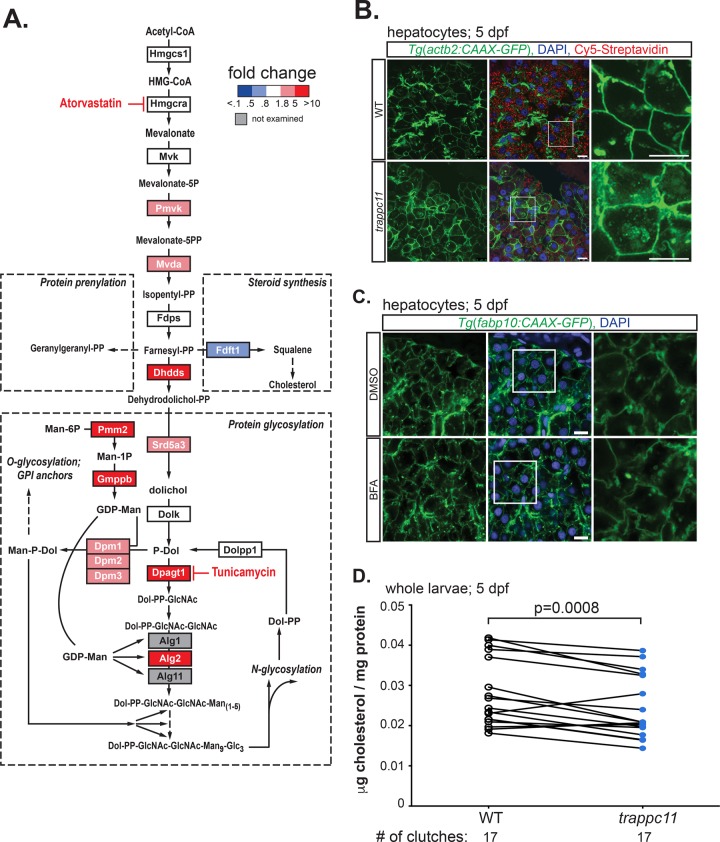FIGURE 5:
Terpenoid and dolichol synthesis defects in trappc11 mutants. (A) Schematic representation of the terpenoid biosynthetic pathway, with branch points at farnesyl-PP leading to production of dolichol (protein glycosylation), squalene (steroid synthesis), and geranylgeranyl-PP (protein prenylation). Fold changes of expression in trappc11 mutant livers are indicated by color: blue indicates decrease and red indicates increase relative to WT siblings; gray indicates genes not tested. Drugs used are indicated with a red T at their targets. (B) Confocal microscopy of transgenic WT and trappc11-mutant zebrafish expressing a prenylated form of GFP (Tg(actb2:CAAX-GFP)) in hepatocytes. Zebrafish were collected at 5 dpf and analyzed for membrane localization of CAAX-GFP. Samples were counterstained with DAPI (nucleus) and Cy5-streptavidin to stain the biotin-rich hepatocytes (middle; white boxes outline magnified GFP-only images shown on right). Scale bars, 10 μm. (C) Confocal microscopy of WT transgenic zebrafish expressing a prenylated form of GFP in hepatocytes (Tg(fabp10:CAAX-GFP). Zebrafish larvae were treated with DMSO (top) or 0.75 μg/ml BFA (bottom) from 3 to 5 dpf and analyzed at 5 dpf for membrane localization of CAAX-GFP. Samples were counterstained with DAPI (blue nucleus). White boxes outline area shown magnified on right (GFP only). Scale bars, 10 μM. (D) Whole WT and trappc11-mutant larvae were collected at 5 dpf, and total cholesterol was measured and normalized to protein content. trappc11 mutants have a significant decrease in cholesterol compared with WT siblings (p = 0.0008, paired Student’s t test), suggestive of decreased terpenoid biosynthetic activity. Individual clutches are indicated (n = 17 for each), with lines representing clutch pairing.

